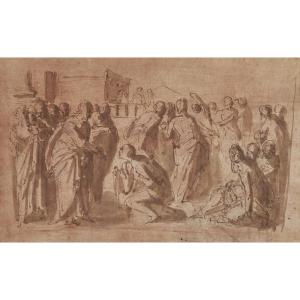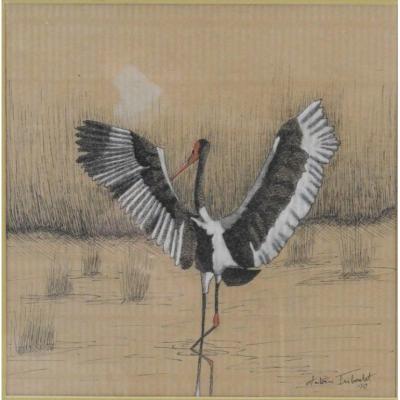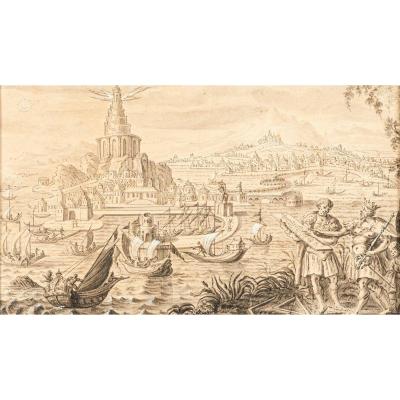Our drawing, by the hand of an artist from the end of the 16th or the beginning of the 17th century, is a free interpretation of one of the engravings from the famous series The Seven Wonders of the World. Indeed, in addition to the composition, many details differ: the vegetation is introduced, the city in the background has a more medieval character, the sharp rocks have turned into a hill and the characters, dressed "à la romaine" adopt positions. more dynamic. What makes our drawing a perfectly original work in a very good state of conservation.
Construction of the Lighthouse of Alexandria was ordered by Ptolemy I (368 - 283 BC) and completed during the reign of his son Ptolemy II (309/308 - 246 BC) in the beginning of the 3rd century BC Jean-Yves Empereur, the famous French archaeologist hypothesizes that the architect of the lighthouse may have been Euclid, the famous mathematician of Alexandria author of the Elements. With an assumed height of 135 meters, the Lighthouse is considered the Seventh of the Seven Wonders of the World. Unfortunately, it will not withstand the multiple earthquakes that have undermined its foundations, but it will have guided the sailors until the beginning of the 14th century AD.
The drawing is presented in a blue wash with a gold line, under an old glass and framed by an elegant Bérain style baguette.
Dimensions: 17 x 29 cm - 34 x 48 cm with frame
Maarten van Heemskerck (Heemskerk 1498 - Haarlem 1574) is a major painter and engraver of history from the Netherlands in the 16th century. Main disciple of Scorel with whom he stayed from 1527 to 1529, Maarten van Heemskerck was, after his master, the most outstanding representative of Italianism in the Northern Netherlands in the 16th century. Like so many other Nordic artists, he visited Italy - from 1532 to 1536 - where he drew extensively after Antiquity and after Michelangelo. His careful sketches retain an admirable topographical value which clearly betrays the militant enthusiasm of the young Romanist. On his return from Italy, he became Haarlem's most prominent artist and became dean of the Guild in 1540.
























 Le Magazine de PROANTIC
Le Magazine de PROANTIC TRÉSORS Magazine
TRÉSORS Magazine Rivista Artiquariato
Rivista Artiquariato
